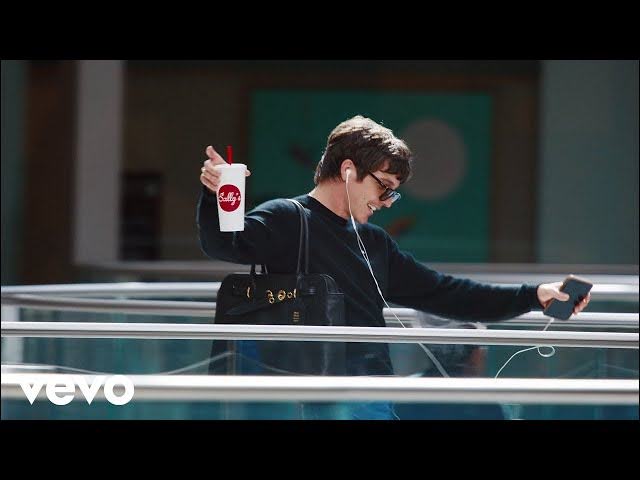
Photo By Dan Meyers/ Unsplash
This week anonymous street artist Banksy officially lost the European trademark to his “Flower Thrower” mural.
The guerrilla graffiti artist had engaged in a prolonged legal battle with the small greeting card company Full Colour Black—which was selling products featuring the image of a Palestinian man throwing a bouquet of flowers. But now a panel at the European Union Intellectual Property Office has announced their decision to revoke the artist’s trademark on the grounds that he could not definitively prove himself to be the mural’s creator.
The trademark—which was established through Banksy’s “handling service,” Pest Control, back in 2014—is distinct from the traditional method for an artist to protect their work through copyright. For a copyright to be valid, the creator must be positively identified, which was not really an option for Banksy, the famously anonymous graffiti artist—who has made a name for himself out of being nameless.
Trademark, by contrast, is intended to help consumers identify genuine goods based on their branding. It’s why Wal-Mart doesn’t sell $5 Gucci knock-offs. Essentially, Banksy had attempted to avoid exposing his identity by operating as a brand rather than an individual. But in order to defend that trademark, there had to be a business using that branding. Enter Gross Domestic Product.
Last Fall, Banksy introduced his online store along with a physical store front in the Croydon area of South London. The store offered “solutions for wealth” including a “clutch” consisting of a brick with some leather straps attached for nearly $1000, a faux tiger-skin rug resembling the flayed, cavity-riddled corpse of Tony the Tiger, and—critically—prints of “flower thrower.”
If Banksy had been satisfied with allowing the store to function outwardly as a simple cash grab, the plan might have worked. Unfortunately, he wanted the world to know that he was too cool for anything like that.
Referring to the whole ordeal as “possibly the least poetic reason to ever make some art,” Bansky explicitly acknowledged that his true motivation for launching Gross Domestic Product was to defend his trademark. A note posted at the Croydon storefront stated that “This shop has come about as a result of legal action. A greeting cards company are trying to sieze [sic] legal custody of the name Banksy from the artist, who has been advised the best way to prevent this is to sell his own range of branded merchandise.”
Unfortunately for Banksy, trademark law explicitly states that a business must be operating in good faith—in genuine pursuit of profit—in order to retain a copyright. So it’s not that surprising that the EUIPO came back with a decision stating that: “Banksy was trying to use the sign only to show that he had an intention of using the sign, but his own words and those of his legal representative, unfortunately undermined this effort.”
What is somewhat surprising is that the panel’s statement went further, indicating that Banksy’s efforts to retain the rights to his work while concealing his identity were futile—that trademark is subject to the same problems as copyright, because he can never prove himself to be the true owner of his work.
Who is Banksy?www.youtube.com
As the panel put it, Banksy “cannot be identified as the unquestionable owner of such works as his identity is hidden … Therefore, the filing of a trademark cannot be used to uphold these rights which may not exist, or at least may not exist for the person claiming to own them.”
The panel also stated that, “Banksy has chosen to remain anonymous and, for the most part, to paint graffiti on other people’s property without their permission, rather than to paint it on canvases or his own property,” In other words, if you want to hide who you are in order to avoid the consequences of violating other people’s property rights, you basically nullify your own property rights.
Considering how long it’s been since anyone was really upset at their property getting the Banksy treatment—it’s the “vandalism” equivalent of throwing a gold brick through someone’s window—it’s hard not to read some stuffy spite into the EUIPO’s statement. They are the enforcers of the established order of society, and if Banksy wants to sit on the sidelines and criticize the established order, then they don’t have to do him any favors.
What this means for the future is that any and all of Banksy’s artwork—not just the “Flower Thrower”—may be subject to unregulated reproduction within the European Union. Essentially, unless Banksy decides to reveal his identity, anyone on Earth has as much claim to his creations as he does.
You could move to Paris tomorrow (if not for the fact that Americans are currently barred from the EU…), and open up a store selling nothing but Banksy-branded merchandise—from Hip-Hop Rat to Balloon Girl, to that kid catching ash on his tongue. You could even tell all your customers that you’re Banksy, and there’s seemingly nothing Robin Gunningham Pest Control could do to stop you.
With his trademark officially cancelled, you have as much legal claim to Banksy’s art and secret identity as anyone else. We are all Banksy now.













